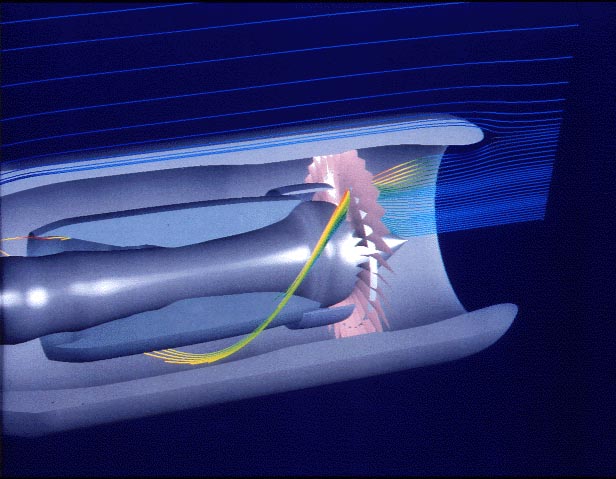A Pratt & Whitney F100 turbofan engine for the F-15 Eagle and the F-16 Falcon being tested in the hush house at Robins Air Force Base, Georgia, USA. The tunnel behind the engine muffles noise and allows exhaust to escape.
A jet engine is a reaction engine that discharges a fast moving jet of fluid to generate thrust in accordance with Newton's laws of motion. This broad definition of jet engines includes turbojets, turbofans, rockets, ramjets, pulse jets and pump-jets. In general, most jet engines are internal combustion engines but non-combusting forms also exist.
In some common parlance, the term 'jet engine' is loosely referred to as an internal combustion duct engine, which typically consists of an engine with a rotary (rotating) air compressor powered by a turbine ("Brayton cycle"), with the leftover power providing thrust via a propelling nozzle. These types of jet engines are primarily used by jet aircraft for long distance travel. Early jet aircraft used turbojet engines which were relatively inefficient for subsonic flight. Modern subsonic jet aircraft usually use high-bypass turbofan engines which give high speeds, as well as (over long distances) better fuel efficiency than many other forms of transport.
About 7.2% of the oil used in 2004 was consumed by jet engines. In 2007, the cost of jet fuel, while highly variable from one airline to another, averaged 26.5% of total operating costs, making it the single largest operating expense for most airlines.
Source : Wikipedia


No comments:
Post a Comment